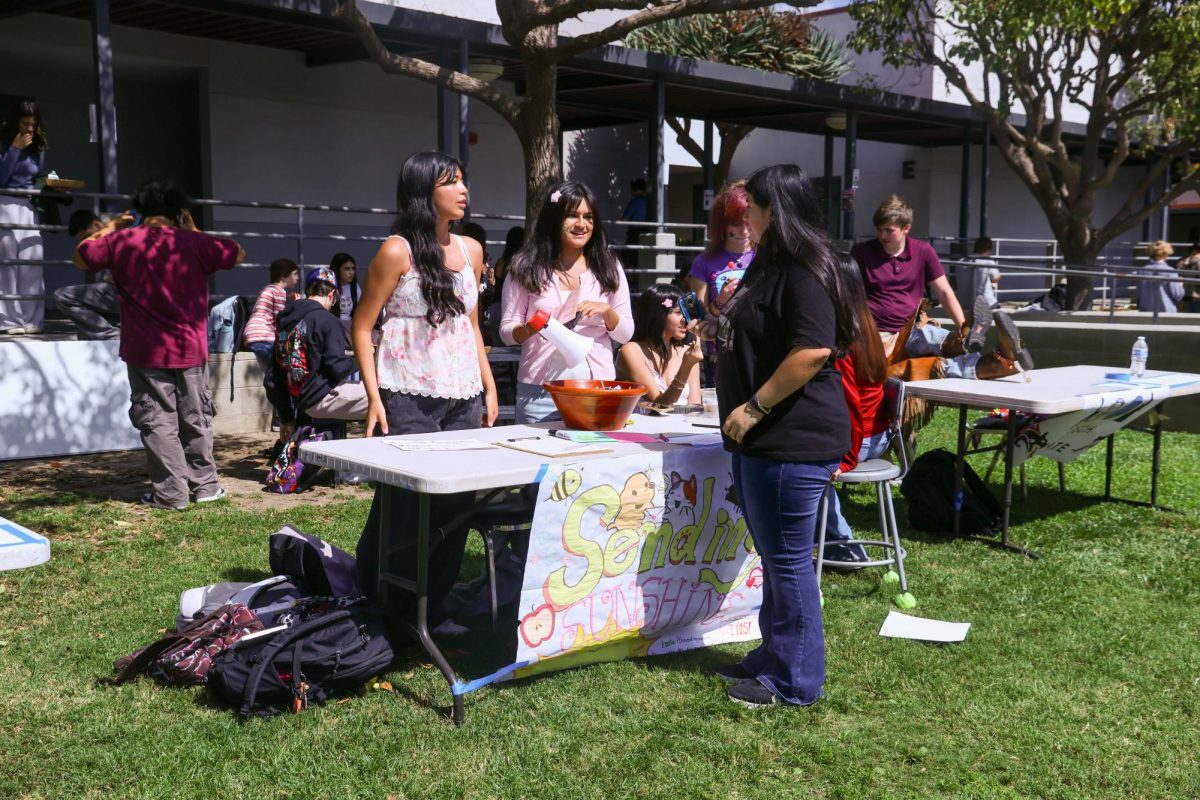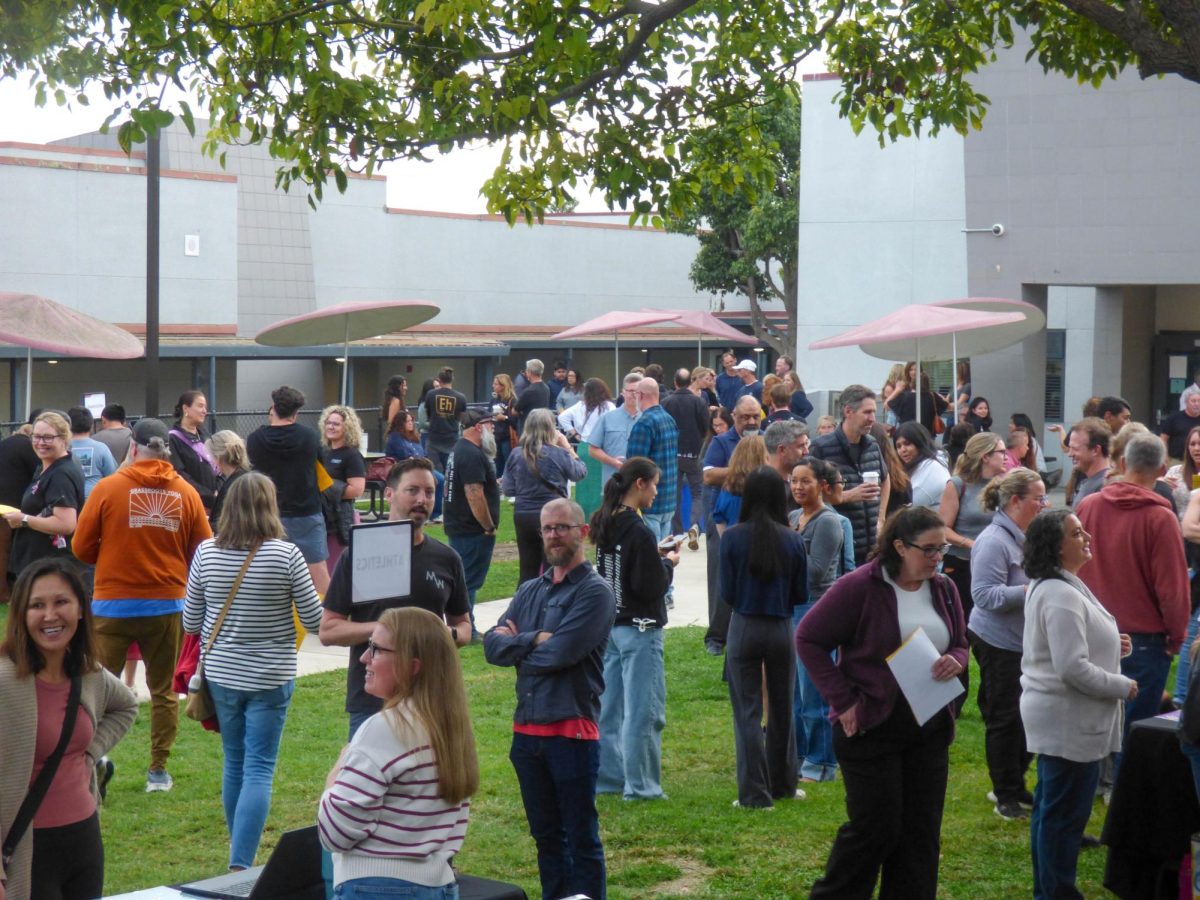
As America has shown increasing tolerance towards marijuana use, and more states have legalized medical marijuana, the number of adolescents who believe the drug is harmful has dropped nearly 30 percent in the last 20 years, from almost 80 percent of high school seniors in 1989, to just above 50 percent of seniors in 2009.
However, Christian Thurstone, Associate Professor of Psychiatry at University of Colorado, Denver, believes that the danger of marijuana is great, especially for adolescent users.
“Youth are especially vulnerable to the effects of marijuana… it may lead to problems biologically or socially,” he said. “They’re at higher risk… for a lot of the poor outcomes for adolescents.”
As a result of this increased acceptance, as well as an increasing number of adolescents using marijuana, Ventura County Behavioral Health’s Alcohol & Drugs Program held a conference on Wednesday concerning the effects and dangers of marijuana.
“While this is a topic everyone seems to have an opinion on, we’ve not seen a coherent and factual presentation locally,” said Patrick Zarate, division manager for the local program. “Given that marijuana is most often cited by youth seeking drug treatment as a primary or secondary drug of choice, we thought it might be of use.”
According to Zarate, the primary audience was practitioners in behavior health and addiction. However, the Alcohol & Drugs Program also invited health care providers, law enforcement, and school officials, including Foothill principal Joe Bova and campus supervisor Dana Eaton.
“We definitely have had more students in the past couple of years get into disciplinary issues because of either possession of marijuana, or being under the influence of marijuana, or selling marijuana,” Bova said. “There’s definitely been an increase, and that’s one of the reasons why we went to the conference.”
Thurstone, the conference’s keynote speaker, discussed how marijuana affects the adolescent brain differently than a fully developed brain.
“The adolescent brain is going through tremendous maturation… so it raises the question… What is the impact on brain development?” he said.
Thurston told the audience of roughly 300 people that adolescent marijuana use lowers one’s IQ, verbal fluency, word recall, visual scanning reaction time, and whole brain volume.
He also said that using marijuana as a teenager can cause an increase in difficulty learning, remembering, and focusing. The use of marijuana has also been linked to increased cerebral blood flow, meaning the brain requires more blood in order to complete tasks.
“Those are people who are clean, so it’s thought that these are permanent changes,” Thurstone said of the participants in the study.
However, his research has also shown that these side effects are reversible for people who began using marijuana after the age of 24, when the brain is fully developed.
According to Thurstone, 17 percent of people who try marijuana as minors develop substance abuse problems, compared to four percent of adults who try marijuana.
“We know that 90 plus percent of adult smokers started before they were 18, it’s the same story with marijuana,” he said.
Thurstone also spoke in an effort dispel common myths concerning marijuana, including that marijuana makes adolescents less aggressive, is not addictive, and is not a gateway drug.
Speaker John Redman, the executive director for Californians for a Drug-Free Youth, cited Article 33 of the UN Convention on the Rights of the Child, which protects children from “the illicit use of narcotic and psychotropic substances,” as an important idea to base drug laws around.
“When it comes to discussing drug laws, we should think of the rights of a child first,” he said. “And if we’re not doing that, then it’s not sound drug policy.”
Redman discussed the increased potency of marijuana, the average of which has now passed a THC content of 10 percent, compared to the 1980s when the average THC content was between two and three percent.
“We’re not dealing with what I call ‘Woodstock weed’ anymore, folks,” he said.
Redman also talked about the increasing acceptance of marijuana use because of the rise of medical marijuana.
He cited a study done by the Wall Street Journal in 2009 that reported over 100 medical marijuana dispensaries in a 20-mile stretch of Ventura Boulevard in Los Angeles.
Redman said what really bothered him was when doctors recommended medical marijuana for teens with anxiety.
“You’re supposed to have anxiety in high school. We don’t want young people to think pot is how you deal with anxiety,” he said. “We didn’t smoke marijuana to get past it, or take shots of Jagermeister. That’s not how you deal with anxiety.”
One of Redman’s goals for prevention is to change community norms.
“Unfortunately, kids nowadays see this as health and health medicine,” he said while pointing to a picture of a marijuana plant.
According to the most recent data available from the 2010 California Healthy Kids Survey, about 21 percent of Foothill students believe there is no harm in smoking marijuana occasionally, and about 25 percent of students believe there slight harm in smoking marijuana occasionally.
Statewide, about 25 percent of students in grades 7 through 12 think that occasional use of marijuana is not harmful, and about 18 percent think that it presents slight harm.
Foothill senior Eric Moll believes that marijuana can be dangerous, but doesn’t think that marijuana is detrimental to adolescents in the long run.
“There’s a lot of negative short term side effects… but there’s various studies that have shown that it goes either way. So I don’t think there’s a lot of concrete evidence that there are a lot of long term side effects,” he said.
Sophomore Madeleine Riddle shared a different opinion.
“Well, there’s a lot of them [negative side effects]. You could damage your brain; you could get lung cancer, and things like that. It’s just really bad for your whole body in general.”
Although Bova believes that for the most part students are aware of the short and long term side effects of marijuana, he still wants to spread awareness, especially to ninth and tenth graders.
“I think even if forty percent of students aren’t very well versed in, or aware of the dangers, that’s a pretty big group of students that are susceptible to try it,” he said.
Both Redman and Thurstone agree that schools play a large role in preventing marijuana use.
“Teachers are absolutely a role model,” said Redman. “They’re the ones that have my children for seven hours a day.”
“There are many effective drug prevention strategies they can use that includes creating a culture that promotes healthier things to do,” said Thurstone.
Bova plans to use what he learned to help raise awareness amongst Foothill students, although he said he will have to sit down with the rest of the administrators to decide the best way to utilize the information.
“I know that we’ll definitely incorporate some of the information we learned and share some of it through our bulletin, and our school resource officer is going to be doing more talks with our freshmen students in their EDA classes,” he said.
Although the use of marijuana has increased, Thurstone believes that with enough information and attention, adolescent marijuana use can be curbed.
“I’ve hoped that we can put the toothpaste back in the tube… we can push back on this,” he said. “Every teen has values and a purpose greater than using drugs.”
Editor’s note: This article was changed at 11:30 a.m. on Saturday, September 22 to clarify that the conference was held by Ventura County Behavioral Health’s Alcohol & Drug Program, an organization related to Ventura County Health Care Agency.








